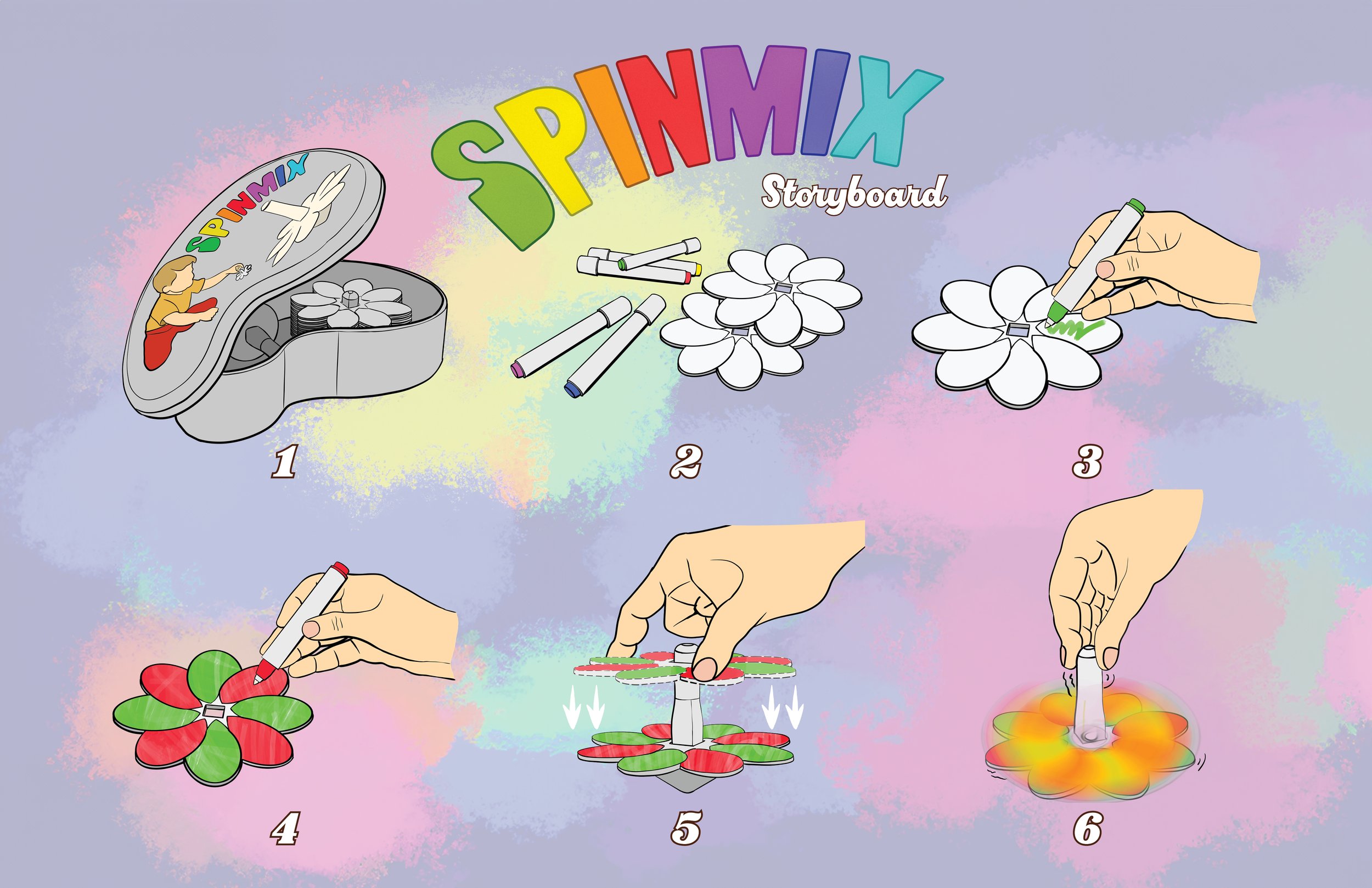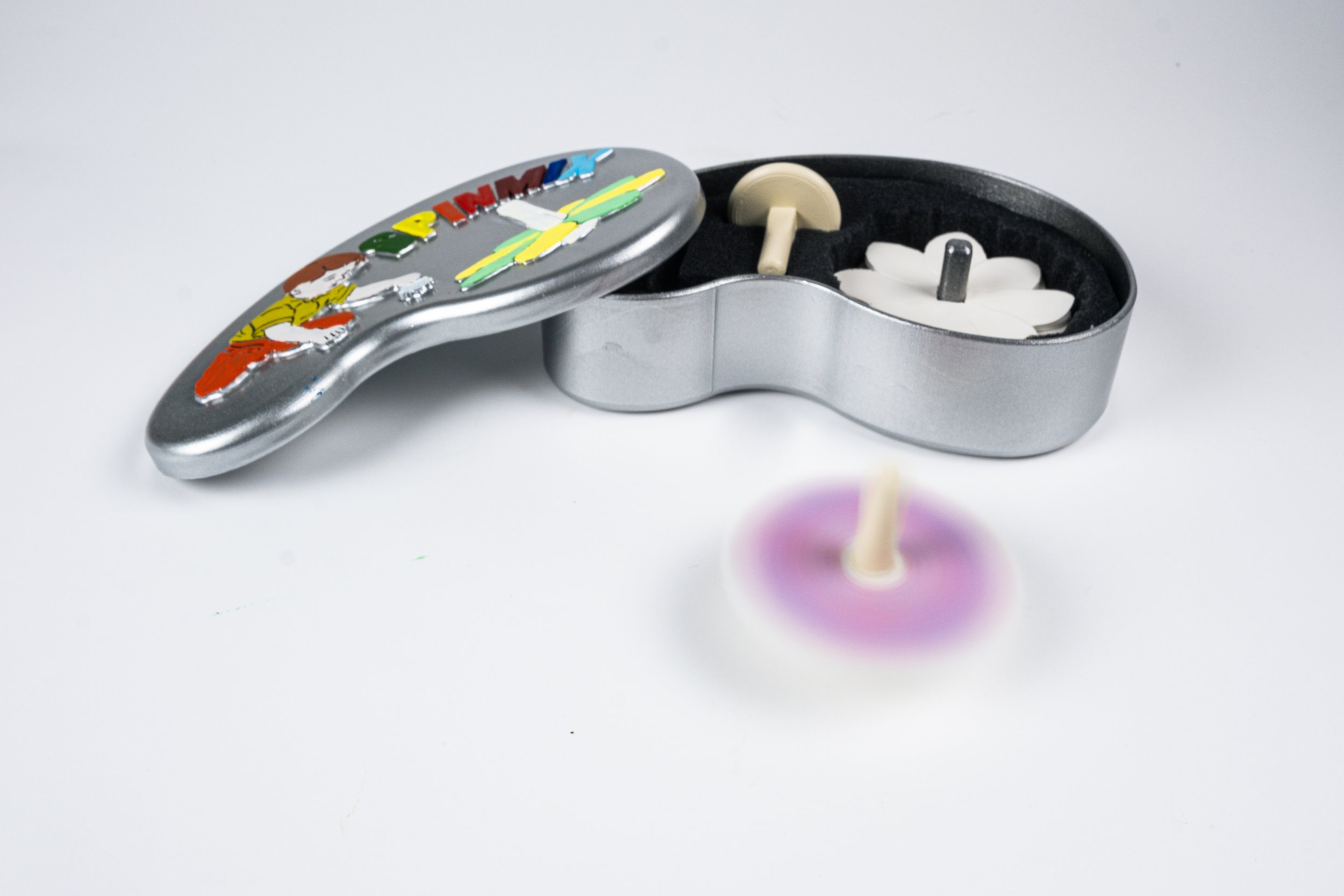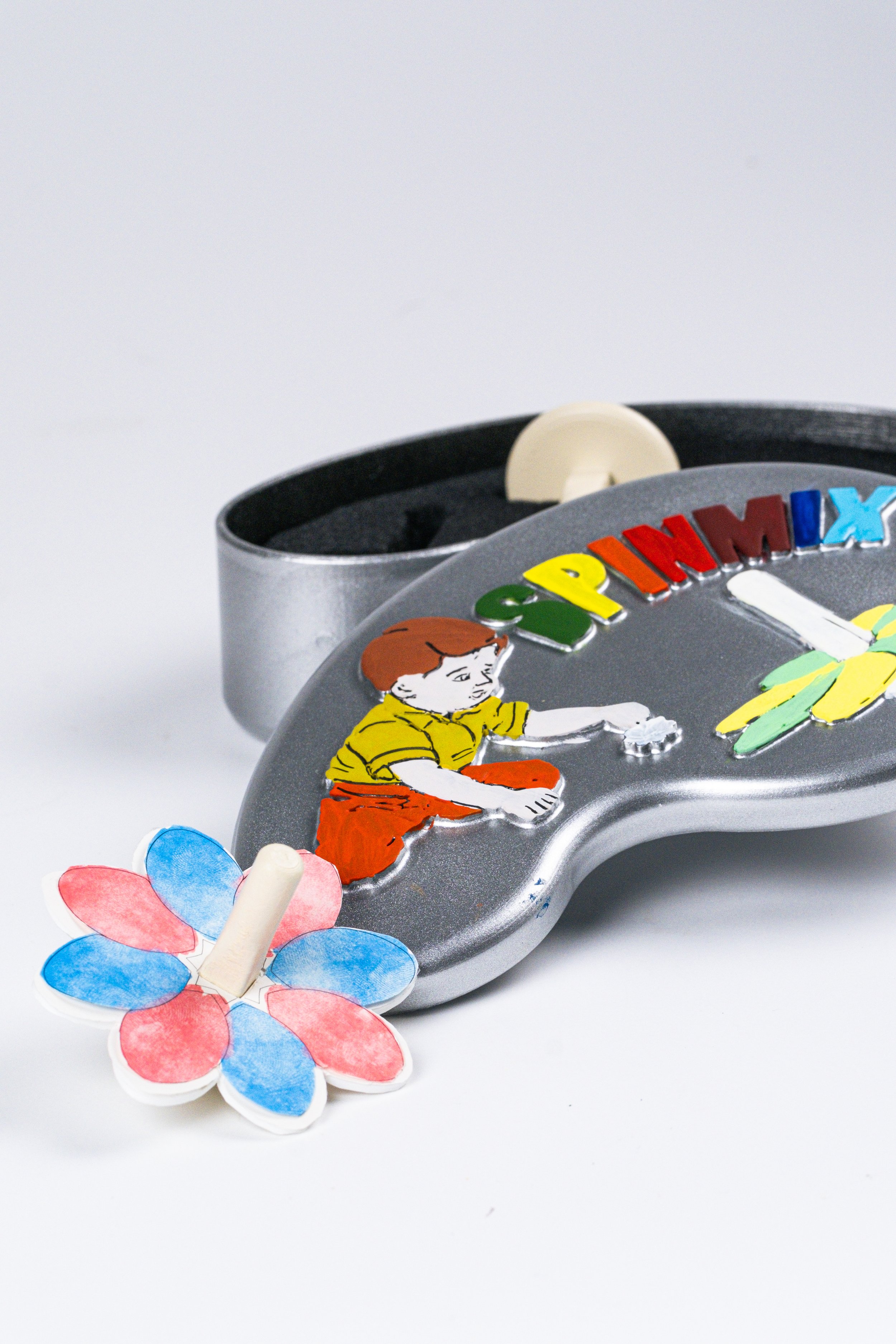“SPINMIX”
Toy Design
individual work - Georgia Tech
December 2023
Design Statement
To design a toy that helps children around 4 years old learn color combinations.
Needs
Combined with children’s playful character and the need for subtle art education, we can know that 4-year-olds need a toy that can help them learn color knowledge while being playable, interactive, and educational.
Market Research
User & Topic Exploration
“Data indicated that some children may be sensitive to color harmony as early as four years of age. A definite positive correlation exists between age and sensitivity to harmonious colors.”
—— Journal of Educational Research, Vol. 48
- More 5-7 years old children recognize all colors than 2-4 years old ones.
- More than 60% of children in 2-4 years old group recognized green, red, yellow and black. While all children in 5-7 years old group recognized black, red and orange colors.
- As children turns 4 years old, they become better at recognizing a wider range of colors, including secondary and more subtle shades. They can also start learning the names of these colors.
Material and Texture
- Non-toxic, child-safe materials free from harmful chemicals.
- Smooth, rounded edges to prevent sharp points or edges.
Visual and Cognitive Development
- Use bright, contrasting colors to engage with
developing visual senses.
- Include age-appropriate shapes, numbers, and letters to encourage learning and cognitive development.
Should Have
- Group problem solving toy
- Appealing forms, shapes, letters
- Ergonomics handles and soft edges
“Teaching kids how to mix primary colors to create secondary colors is a great way to start.”
——The Basics of Art: Teaching Kids About Color, Line, Shape, and Texture. 2023
Weight
- Keep the weight of the toy manageable for a 4-year-old child to carry and manipulate comfortably.
- Toys should generally not exceed 2-3 pounds (0.9-1.4 kilograms).
Assembly and Maintenance
- Toys should be easy to assemble, disassemble, and clean, if necessary, to ensure hygiene and safety.
Could Have
- Smooth and mild material
- Wood or other material finishes
Advanced Concepts
Ergonomics
Size and Dimensions
- Toy size - not too small to pose a choking hazard.
Small parts should have a diameter of at least 1.25 inches (3.2 centimeters).
- Handle or grip diameter - for easy handling.
A handle diameter of 1.25 to 1.5 inches (3.2 to 3.8 centimeters) for hand-held.
Grasping and Manipulation
- Consider the child’s hand size and dexterity.
A 4-year-old’s hand can typically span 2.25 to 2.75 inches (5.7 to 7 centimeters).
- Buttons, switches, or knobs should be large and easy to manipulate.
Design Criteria
Must Have
- Allows kids to color by themselves
- Fun to play
- Have variety of color options for children to explore
- Strong continuity, won’t feel boring after playing multiple times
Persistence of Vision
Testing
Storyboard

Final Product













